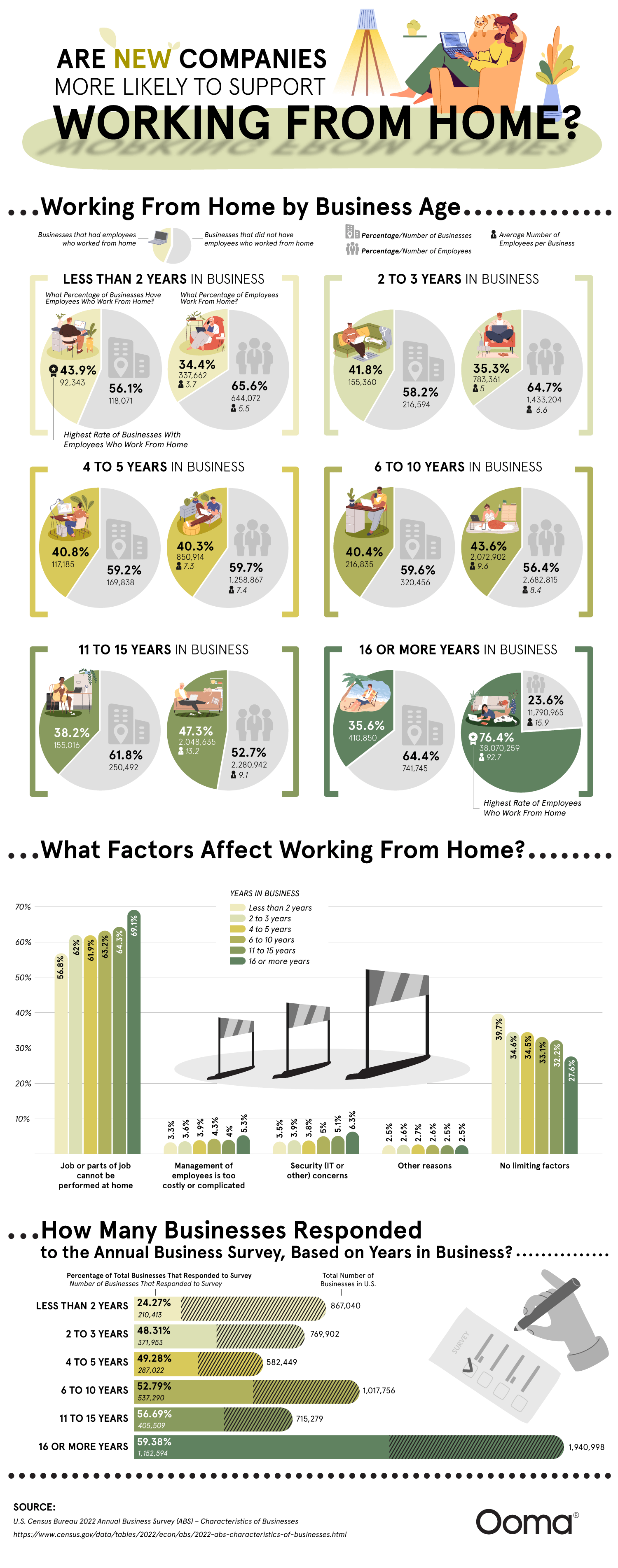Business Visualizations
Study Analyzes How Company Age Shapes Remote Work Adoption
Before the Internet, the traditional workday happened on-site or in an office space. Businesses relied on face-to-face interaction in customer service and functions. Physical presences were needed to answer phones, greet clients, keep a filing system, and produce work. But high-speed internet access and video conferencing changed the face of the workday. Office-based work was no longer necessary. The COVID-10 pandemic pushed workers home by necessity, and once the danger passed, employees began to demand the continuing flexibility of a work-at-home schedule. However, not every company or business is ready to adapt.
The team at Ooma performed a comprehensive analysis of data from the U.S. Census Bureau’s 2022 Annual Business Survey. The findings revealed interesting patterns in how the age of a company influences its decision to offer remote work. The youngest companies, those under 2 years old, most commonly offered work-from-home options at 43.9%. The older the company, the fewer remote work options there were. Here are the statistics: 41.8% for businesses aged 2–3 years, 40.8% for 4–5 years, 40.4% for 6–10 years, 38.2% for 11–15 years, and 35.6% for companies with 16 or more years in operation.
Click below to zoom.
When studying why companies don’t adopt remote work, the primary obstacle was clear and consistent across companies of all ages. 56.8% to 69.1% of companies said that job incompatibility was the biggest barrier to remote work. Obviously, not all tasks can be performed remotely. After job incompatibility, companies cited security concerns as the biggest barrier to remote work. However, the younger the company, the less likely they were to have computer security concerns. Younger companies are more likely to rely on cloud-based work software with built-in security features.
After these two reasons, management complexity was the most common barrier. The larger the company, the more difficult managing remote workers might become. The most interesting category might have been the data on companies reporting “no limiting factors” to remote work. 39.7% of the youngest companies said there were no barriers and 27.6% of the oldest companies believed there were no barriers to offering remote work.
The team also examined the number of remote workers and changes over time. It was clear that the COVID-19 pandemic skyrocketed the number of remote workers. Only 23% of remote work-capable employees actually worked from home in 2019. By 2023, 35% of these employees worked from home, down from the pandemic peak of 38% in 2021. Although there was a peak in remote work at the height of the pandemic, it’s clear that remote work is much more common now than it was before the pandemic.
The findings point to newer companies having more willingness and capability to offer remote work, though large legacy businesses have the biggest staff and most resources to hire remote workers. However, they have the biggest challenges in adapting old systems to new ways of working, a task young companies don’t need to worry about.
